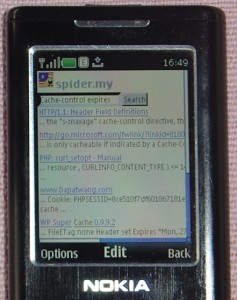Pos Malaysia Shipping rates / quotations for osCommerce and Zen Cart
January 16th, 2011The shipping quote API and shipping modules for osCommerce and Zen Cart is now at Shipping-Quote.net
 Pos Malaysia have updated their website in the last few days, with new page markup and new URLs. Either one of those changes would have broken the old osCommerce shipping modules I wrote. I won’t be updating the old shipping modules any more, as random, non-improving changes to postal service websites that break business functionality are completely intolerable.
Pos Malaysia have updated their website in the last few days, with new page markup and new URLs. Either one of those changes would have broken the old osCommerce shipping modules I wrote. I won’t be updating the old shipping modules any more, as random, non-improving changes to postal service websites that break business functionality are completely intolerable.
The extra bad news is that I haven’t quite finished updating the spider.my quotation functionality to cope with Pos Malaysia’s web changes. The good news is that I should finish either late tonight (16 Jan 2011) or sometime tomorrow. I have test versions of shipping plugins available for both osCommerce and Zen Cart, and I’ll put those online probably tomorrow afternoon.
The good news is that the new shipping modules should greatly improve:
- the responsiveness of your website by transferring only the data (no bloated markup) needed to give a shipping quote
- the ease with which you can add shipping quotations to your website – there’s only one shipping module for each e-commerce suite, with config to select your favourite postal services
- the reliability of your shipping quotations – scraping Pos’ website for data just completely fails whenever Pos fiddles about with its website. Spider.my will provide a dedicated data-only API for shipping quotations that will continue to work whether Pos’ website is messed about with or even offline.
Enough of that, I thought I’d better post a head’s up. The first report I had of a problem was from a Malaysian online shop whose last international delivery went out on Thursday 13th, so these changes have happened since then. More later when I have the code ready.
